The Nuclear Battery Aboard Perseverance, the Next-Gen Mars Rover
The post The Nuclear Battery Aboard Perseverance, the Next-Gen Mars Rover appeared first on POWER Magazine.
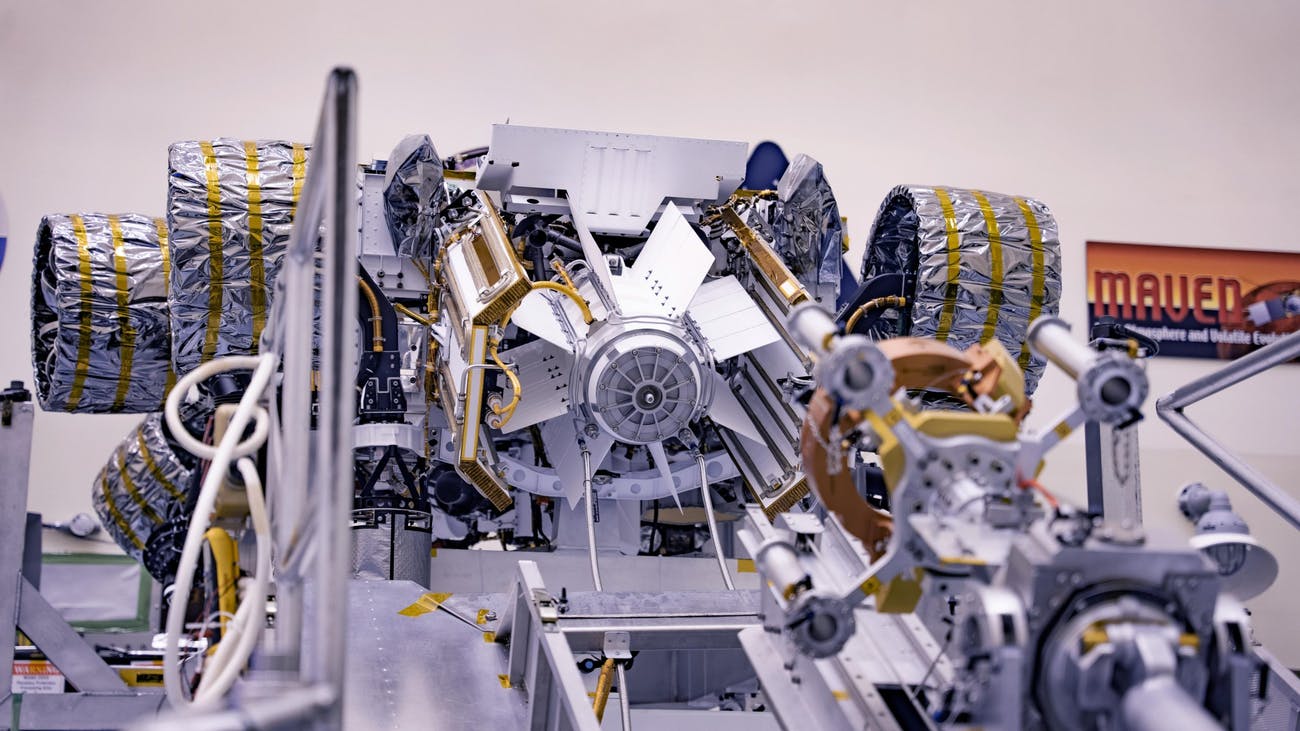
NASA's next-generation Mars rover Perseverance, which successfully launched on July 30 atop an Atlas 5 rocket from the Cape Canaveral Air Force Station in Florida, will depend on a nuclear battery" for electrical power when it completes its seven-month journey to the Red Planet.
Idaho National Laboratory (INL) celebrated the launch of the rover, and especially the Multi-Mission Radioisotope Thermoelectric Generator (MMRTG), which NASA developed, but INL assembled, tested, and delivered this spring to the Kennedy Space Center in Florida in preparation for launch. The launch culminates years of planning, training, and hands-on work for INL's space power systems team, the national laboratory said.
While Perseverance's mission is simple-to find signs of life and collect rock and soil samples for possible return to Earth-its sophisticated MMRTG will be crucial once it lands on Feb. 18, 2021, to keep Percy's" instruments running and help keep it warm as it explores the frigid planet.
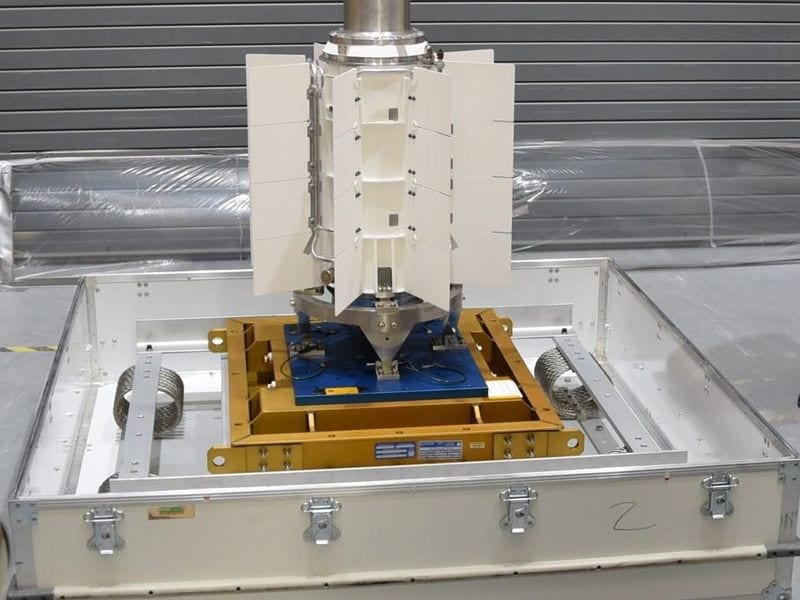 The electricity for NASA's Mars 2020 rover is provided by a power system called a Multi-Mission Radioisotope Thermoelectric Generator, or MMRTG. Essentially a nuclear battery, an MMRTG uses the heat from the natural radioactive decay of plutonium-238 to generate about 110 W of electricity at the start of a mission. Source: NASA/JPL-CaltechA Long-Lasting Nuclear Battery
The electricity for NASA's Mars 2020 rover is provided by a power system called a Multi-Mission Radioisotope Thermoelectric Generator, or MMRTG. Essentially a nuclear battery, an MMRTG uses the heat from the natural radioactive decay of plutonium-238 to generate about 110 W of electricity at the start of a mission. Source: NASA/JPL-CaltechA Long-Lasting Nuclear Battery MMRTGs essentially use radioisotope power systems (RPS) to convert heat from the natural decay of radioisotope materials into electricity. RPSs are ideal for space missions because they are compact, durable and reliable, providing continuous power over long periods of time, INL explained in a special feature on its homepage on Thursday.
Perseverance's MMRTG falls under an RPS technology subset known as a radioisotope thermoelectric generator (RTG). It consists of two major elements: a heat source that contains plutonium-238 (Pu-238) and a thermocouple, which is a device that makes electricity without moving parts that might fail during a long space mission.
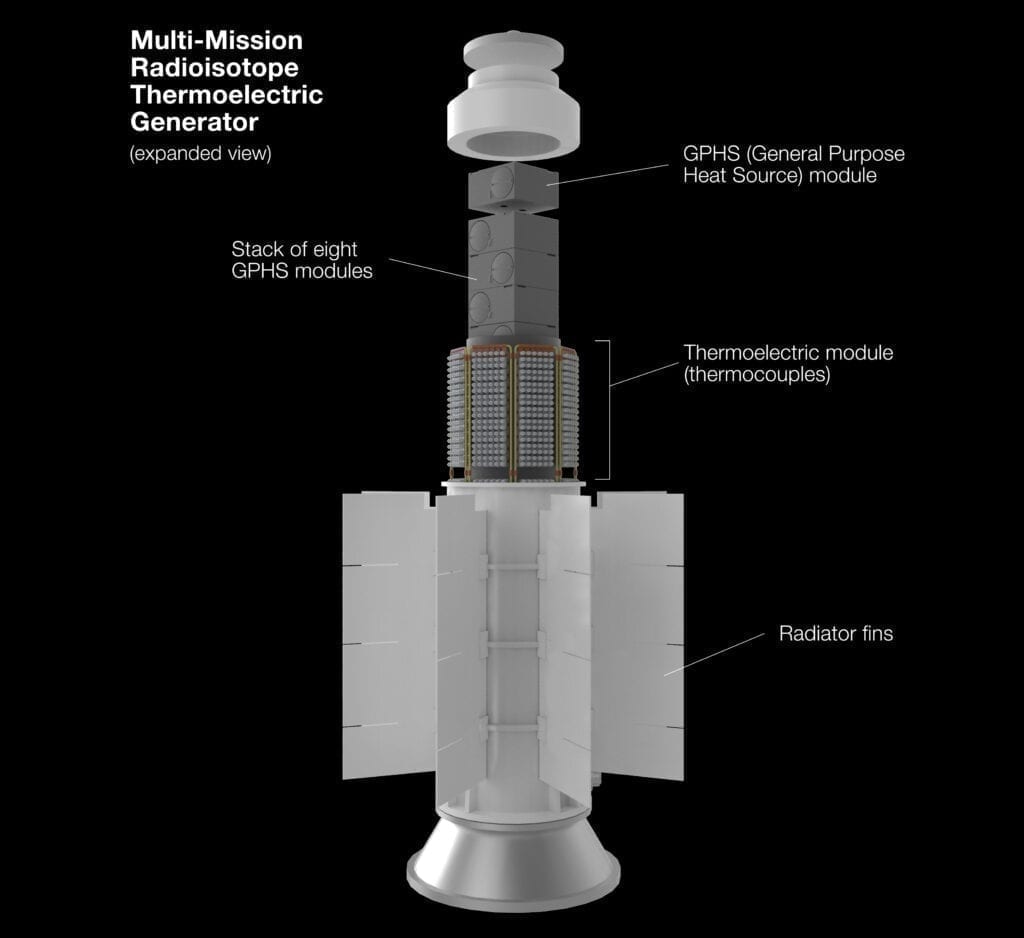 Labeled pull-apart view showing the major components of the MMRTG, or Multi-Mission Radioisotope Thermoelectric Generator. Source: NASA
Labeled pull-apart view showing the major components of the MMRTG, or Multi-Mission Radioisotope Thermoelectric Generator. Source: NASAThermocouples are common in everyday items that must monitor or regulate their temperature, such as air conditioners, refrigerators and medical thermometers," NASA says. The principle of a thermocouple involves two plates, each made of a different metal that conducts electricity. Joining these two plates to form a closed electrical circuit while keeping the two junctions at different temperatures produces an electric current. Each of these pairs of junctions forms an individual thermocouple."
In an RTG, the natural decay of Pu-238 produces heat that is then transferred to one of these junctions while the other junction remains unheated and is cooled by the space environment or a planetary atmosphere. The thermocouple produces power by exploiting the temperature differential between the hot side and the cool side. This electricity production is based on a well-known scientific effect called the Seebeck effect," INL explained.
The technology stems from development of generators previously fueled and tested at INL, and which are currently powering the 2011-launched Mars Science Laboratory Curiosity rover and Pluto New Horizons (launched in 2006 and the first assembled, tested and delivered by INL).
In June 2003, the DOE awarded the MMRTG system design, development, test and integration contract to a team led by Aerojet Rocketdyne's Propulsion and Power Division. Aerojet Rocketdyne and Teledyne Energy Systems collaborated on an MMRTG design concept based on a heritage SNAP 19 thermoelectric converter design utilized by Teledyne for previous space exploration missions (including Pioneer 10 and 11 spacecraft in 1972 and 1973, respectively, and the Viking 1 and 2 Mars Landers in 1975). Aerojet Rocketdyne later awarded Teledyne Energy Systems the subcontract to design and produce the thermoelectric converter system for the MMRTG.
Teledyne Energy Systems, Inc. provided the housing and all internals, including the proven PbTe/TAGS thermoelectric modules. Rocketdyne supplied the cooling tubes and emissive coating external paint. The MMRTG was fueled at Idaho National Laboratory. After the initial fuelling, the MMRTG was producing about 120 W power output," Teledyne says on its website.
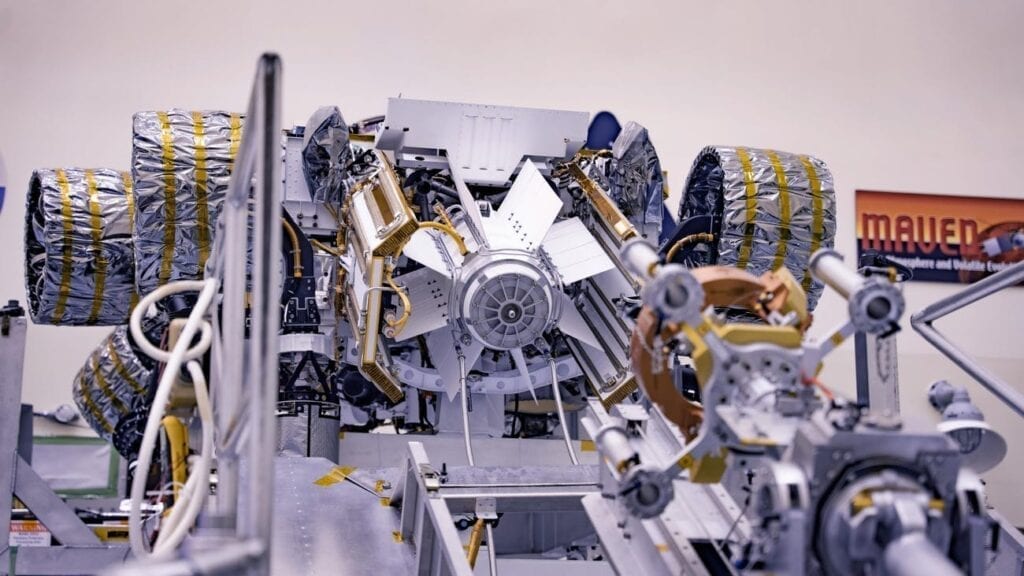 The MMRTG arrived at Kennedy Space Center in April 2020 following its final assembly and transport from Idaho National Laboratory. The fit check is the first time that the fueled flight generator is connected to the rover. After the successful fit check, the Multi-Mission Radioisotope Thermoelectric Generator was disconnected; it will be connected to the rover for the final time on the launch pad atop the mission's Atlas V launch vehicle in July, before the planned launch of the Mars 2020 mission. Source: NASA
The MMRTG arrived at Kennedy Space Center in April 2020 following its final assembly and transport from Idaho National Laboratory. The fit check is the first time that the fueled flight generator is connected to the rover. After the successful fit check, the Multi-Mission Radioisotope Thermoelectric Generator was disconnected; it will be connected to the rover for the final time on the launch pad atop the mission's Atlas V launch vehicle in July, before the planned launch of the Mars 2020 mission. Source: NASABut Perseverance is also especially notable because it will be the first rover to use plutonium created by Oak Ridge National Laboratory. Oak Ridge is working with INL and Los Alamos national laboratory to help NASA beef up its fuel supply for Pu-238. Pu-238 gives off a large amount of heat due to radioactive decay during the course of its 87.7 year half-life," INL said. While other radioisotopes have been studied and used in the past for radioisotope power systems, Pu-238 has demonstrated the best properties for conversion from heat to electricity for space missions, and it has been used safely since the 1960s.
However, while the U.S. has enough plutonium to fuel the space missions scheduled for the next decade, the domestic supply of plutonium is a limited resource. In order to establish a new supply of Pu-238 to enable future NASA missions, Congress directed the DOE to resume Pu-238 production.
To make Pu-238, DOE repurposes some of its stockpile of neptunium-237 (Np-237)-a complicated process, involving experts and equipment at three national laboratories," INL said. ORNL recently automated part of the production process allowing the lab to produce up to 400 grams of Pu-238 each year, moving closer to NASA's goal of 1.5 kg per year by 2025.
Perseverance will use about 10.6 pounds (4.8 kg) of plutonium dioxide. The fuel inside each General Purpose Heat Source module is surrounded by several layers of protective materials, including the type of tough material used in the nose cones of missiles designed to survive fiery conditions during re-entry into Earth's atmosphere. In addition, the radioisotope fuel is manufactured in a ceramic form (similar to the material in a coffee mug) that resists being broken into fine pieces, reducing the chance that hazardous material could become airborne or ingested," NASA said.
Small but DurableThe Perseverance MMRTG is designed to produce about 110 W of electrical power to begin the mission-though that power will decline a few percent every year. The system has a design life of 14 years-well beyond the Mars 2020 prime mission duration of 1.5 Mars years (three Earth years)-but it can be expected to produce power much longer than that. According to the DOE, RTGs are built to last." The agency adds: In fact, some RTGs launched decades ago, are still in operation today like the Voyager mission that first started in 1977."
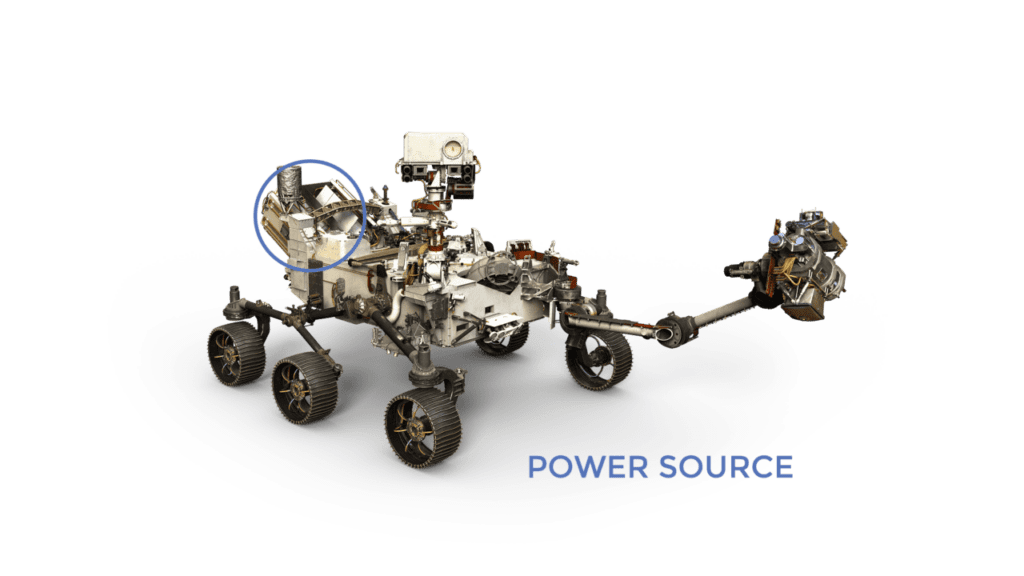 Perseverance's power source is circled in blue. Source: NASA
Perseverance's power source is circled in blue. Source: NASAAccording to NASA, the MMRTG aboard Perseverance is only about 25 inches in diameter, 26 inches long, and it weights about 99 pounds. The system also includes two lithium-ion rechargeable batteries to meet peak demands of rover activities when demand temporarily exceeds the MMRTG's steady electrical output levels.
The next MMRTG will power the Dragonfly rotorcraft lander mission to explore Saturn's largest moon, Titan. Dragonfly is scheduled to launch in 2026. Since solar energy is not a viable option in Titan's hazy atmosphere, the MMRTG is expected to play a major role in supplying power to the spacecraft, the DOE said. INL will likely fuel and test that power source.
INL said its Space Nuclear Power and Isotopes Systems group is also getting more involved in space reactors for both nuclear thermal propulsion and fission surface power applications."
Perseverance paves the way for new science and technological discoveries," said Jim Reuter, the associate administrator for NASA's Space Technology Mission Directorate (STMD). The knowledge and capabilities we gain from this mission will help prepare us for human missions on Mars as early as the 2030s. Technology will drive that exploration."
-Sonal Patel is a POWER senior associate editor (@sonalcpatel, @POWERmagazine).
Updated (Feb. 18, 2021): Adds details about the MMRTG system design, development, testing, and production, which was completed by Teledyne Energy Systems.
The post The Nuclear Battery Aboard Perseverance, the Next-Gen Mars Rover appeared first on POWER Magazine.